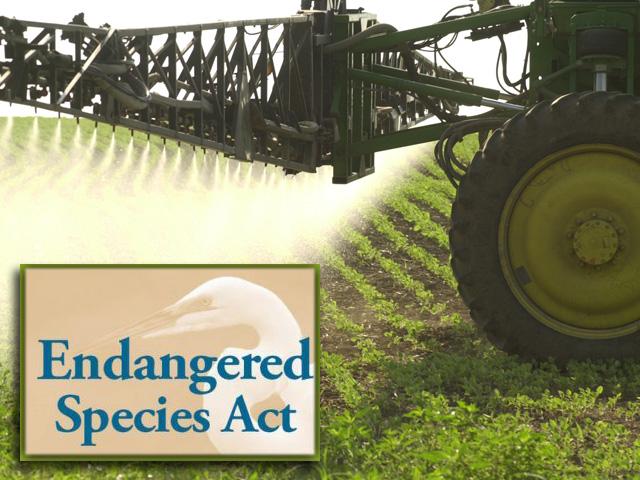EPA Releases Bio Opinion on Insecticide
EPA Biological Opinion Finds Cyantraniliprole Likely to Affect Certain Species
LINCOLN, Neb. (DTN) -- The insecticide cyantraniliprole is likely to adversely affect certain listed species and designated critical habitats, the EPA said in a draft biological opinion the agency released on Tuesday.
Last November, EPA was ordered by a federal appeals court to assess the chemical's risk to endangered species and to update its labeling to include mitigation measures. The agency has until September 2023 to complete the process.
"An LAA (likely to adversely affect) determination means that EPA reasonably expects that at least one individual animal or plant, among a variety of listed species, may be exposed to cyantraniliprole at a sufficient level to have an adverse effect," the agency said in a news release.
Cyantraniliprole is the active ingredient in both Corteva Agriscience's Lumiderm seed treatment and Syngenta's Fortenza.
The chemical is a Group 28 insecticide (diamides). Fortenza is available for use in Canada in canola, corn and soybeans to target pests such as wireworm, cutworm and European chafer. Lumiderm is registered in Canada for use in canola and soybeans to control flea beetles, cutworms, bean leaf beetles and soybean aphids.
As part of its assessment, EPA evaluated the effects of cyantraniliprole on more than 1,700 listed species and more than 800 designated critical habitats in the U.S. and its territories.
P[L1] D[0x0] M[300x250] OOP[F] ADUNIT[] T[]
EPA said cyantraniliprole was likely to adversely affect and may cause jeopardy to 4% of listed species and adversely modify 1% of critical habitats.
The agency said it predicts the chemical will cause no effect to 25% of listed species and 33% of critical habitats. In addition, EPA said the insecticide "may affect" but is "not likely" to affect 34% of listed species and 54% of critical habitats.
The draft opinion will be available for a 60-day public comment period.
EPA took the action as a result of a ruling by the U.S. Court of Appeals for the District of Columbia Circuit as part of an ongoing legal battle.
The agency is required by the court to file a progress report with the court every 60 days.
In 2014, the EPA registered the pesticide without first determining whether it would have adverse effects on endangered species. The court ruled in June 2017 that EPA violated the Endangered Species Act by registering the insecticide "before making an ESA effects determination or consulting with other agencies."
Then, in 2019, the agency was ordered by the DC Circuit to fulfill its statutory obligation. The EPA has yet to do so.
In January 2022, EPA announced plans to -- for the first time in decades -- fully comply with the Endangered Species Act.
According to the court's ruling, the environmental groups said during oral arguments they no longer will seek to vacate cyantraniliprole's registration because EPA agreed to meet the September 2023 deadline. If that deadline is unmet, the court said, the groups would be allowed to renew a motion for vacatur.
The Center for Biological Diversity and the Center for Food Safety originally asked the court to grant an order requiring EPA to conduct an ESA analysis within six months or face vacatur of the insecticide registration.
Read more on DTN:
"EPA Ordered to Make Endangered Species Act Assessment on Insecticide Cyantraniliprole by 2023," https://www.dtnpf.com/…
Todd Neeley can be reached at todd.neeley@dtn.com
Follow him on Twitter @DTNeeley
(c) Copyright 2023 DTN, LLC. All rights reserved.






